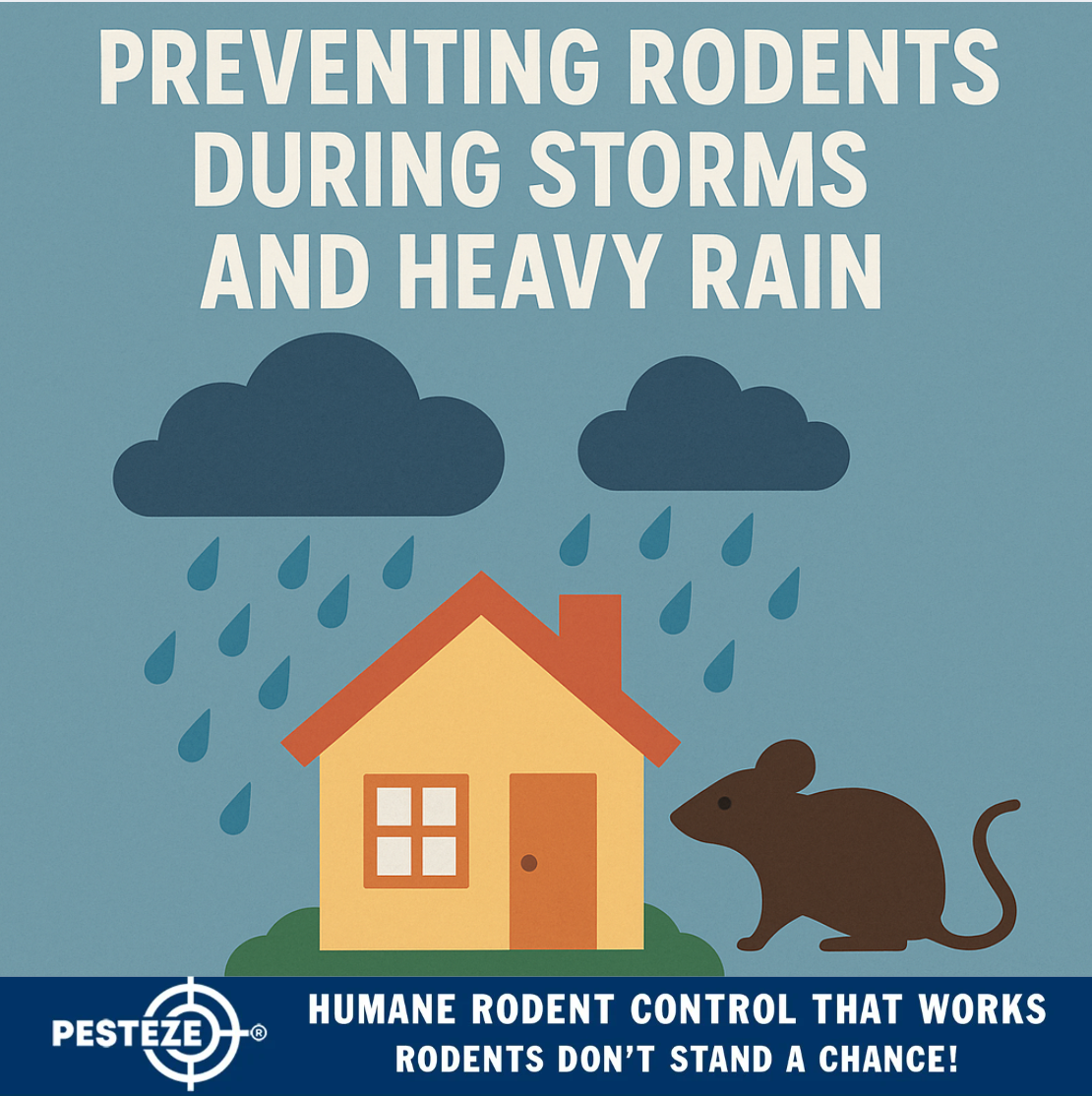PREVENTING RODENTS DURING STORMS AND HEAVY RAIN

PREVENTING RODENTS DURING STORMS AND HEAVY RAIN
SUMMARY
Storms and heavy rain often drive rodents from flooded burrows into homes. This guide explains how to safeguard your property during extreme weather and keep rodents from turning your home into shelter.
FEATURES
-
Inspect and Seal Cracks: Close gaps in foundations and walls.
-
Secure Drainage Systems: Maintain gutters and downspouts.
-
Elevate Trash Storage: Keep garbage bins sealed and off the ground.
-
Protect Utility Openings: Seal gaps around pipes and vents.
-
Dry Out Damp Spaces: Use dehumidifiers in basements and crawl spaces.
-
Emergency Repairs: Address storm damage immediately to block access.
DESCRIPTION
Heavy rain and storms can do more than damage roofs and flood basements—they also disrupt rodent habitats. Burrows often fill with water, forcing rodents like rats and mice to seek higher, drier shelter, which usually means invading homes. Preparing your property before storms hit can greatly reduce the risk of unwanted infestations.
The first step is to inspect and seal cracks in your foundation and exterior walls. Even small gaps provide easy access for rodents escaping flooding. Using caulk, steel wool, or concrete patching ensures these weak spots stay secure, even under pressure from water.
Next, focus on your drainage systems. Clogged gutters and broken downspouts can cause water to pool around your home, weakening walls and creating new entry points. By keeping drainage clear, you reduce both water damage and the likelihood of rodents finding entry.
Trash storage is another key factor. Flooded yards and scattered garbage attract rodents in search of food. Elevate your bins, ensure lids fit tightly, and keep them away from direct contact with walls to minimize rodent activity during storms.
Utility openings are often overlooked but provide direct access to your home. Gaps around pipes, vents, and HVAC lines can widen during heavy rain. Sealing them with mesh or waterproof caulk blocks rodents while still allowing utilities to function.
Storms also create damp, humid environments inside. Basements and crawl spaces are particularly vulnerable. Using dehumidifiers and sump pumps helps keep these areas dry, discouraging rodents from nesting in moisture-rich spots.
Finally, after any severe storm, check for damage immediately. Broken vents, missing shingles, and waterlogged walls can all become new rodent entry points. Quick emergency repairs prevent rodents from taking advantage of the weakened structure.
By combining proactive sealing, strong waste management, proper drainage, and fast storm response, you can keep rodents outside—even during the heaviest rains. These steps not only protect your home from infestations but also preserve its long-term structural integrity.
- Saharsh Bansal


Comments 0